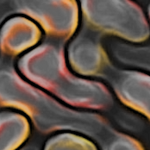- We’re retiring the File Exchange at the end of this year. The JMP Marketplace is now your destination for add-ins and extensions.
- JMP 19 is here! Learn more about the new features.
- Subscribe to RSS Feed
- Mark Topic as New
- Mark Topic as Read
- Float this Topic for Current User
- Bookmark
- Subscribe
- Mute
- Printer Friendly Page
Discussions
Solve problems, and share tips and tricks with other JMP users.- JMP User Community
- :
- Discussions
- :
- Spec limits for Control Chart Builder with multiple phases and where condition
- Mark as New
- Bookmark
- Subscribe
- Mute
- Subscribe to RSS Feed
- Get Direct Link
- Report Inappropriate Content
Spec limits for Control Chart Builder with multiple phases and where condition
Using JSL in JMP ver. 15.2.0. JSL code is embedded in attached table with script name = 'Control Charts'.
I'm struggling with behavior in nested loops when attempting to add spec limits (LSL, Target, USL) via custom graphics script for variable number of phase groupings and 'where' conditions. My nested loops currently result in spec limits for last chart being applied to all control charts created, instead of each chart/phase/where condition receiving its respective limits.
Many thanks in advance for a nudge in the right direction!
Todd
- Mark as New
- Bookmark
- Subscribe
- Mute
- Subscribe to RSS Feed
- Get Direct Link
- Report Inappropriate Content
Re: Spec limits for Control Chart Builder with multiple phases and where condition
Todd, JMP / JSL is a bit weird when compared to more typical programming languages -- in particular, you pretty much have to do all scope control yourself.
I've got an example here that illustrates what you're dealing with -- one might think that the below script will create a "Red" then "Blue" triangle in the graphics script, but instead only two blue triangles are created.
Names Default To Here( 1 );
Open( "$SAMPLE_DATA/Big Class.jmp" );
biv = Bivariate( Y( :weight ), X( :height ), FitLine );
rbiv = biv << report;
framebox = rbiv[frame box( 1 )];
/**** Make a red triangle??? ****/
color = "Red";
framebox << Add Graphics Script(
Transparency( 0.5 );
Fill Color( color );
Polygon( [60, 72, 57], [75, 120, 120] );
);
/**** Make a blue triangle??? ****/
color = "Blue";
framebox << Add Graphics Script(
Transparency( 0.5 );
Fill Color( color );
Polygon( [60, 72, 57], [85, 130, 130] );
);This happens because of how JSL handles scope -- when you use the <<Add Graphics Script() function then it is added as a set of unevaluated statements (actually it is an unevaluated Glue() function). Any variable that exists within the <<Add Graphics Script() script will get evaluated only during execution of the script. When the graphics script is running (remember, it is attached to the Frame Box which is embedded in the display tree of the window) it will need to resolve each variable. The scope resolution rules dictate that it will look into the Local scope (if it exists), the Here scope (if it exists), then the Global scope -- if it cannot find them in any of these scopes it will get replaced by an Empty() value.
So the scripts get added to the Frame Box inside of the main script, but only executed later. At this later point, the color variable is "Blue", thus both triangles are blue.
The way to resolve this is to have any variables of interest get resolved when adding the graphics script, not when executing it. To do this use the Eval( Eval Expr() ) methodology, as shown here.
Names Default To Here( 1 );
Open( "$SAMPLE_DATA/Big Class.jmp" );
biv = Bivariate( Y( :weight ), X( :height ), FitLine );
rbiv = biv << report;
framebox = rbiv[frame box( 1 )];
/**** Make a red triangle!!! ****/
color = "Red";
Eval( Eval Expr(
framebox << Add Graphics Script(
Transparency( 0.5 );
Fill Color( Expr( color ) );
Polygon( [60, 72, 57], [75, 120, 120] );
);
) );
/**** Make a blue triangle!!! ****/
color = "Blue";
Eval( Eval Expr(
framebox << Add Graphics Script(
Transparency( 0.5 );
Fill Color( Expr( color ) );
Polygon( [60, 72, 57], [85, 130, 130] );
);
) );You need to use this method for all of your variables within the <<Add Graphics Script() function in order for them to hold the value at the time the <<Add Graphics Script() was called.
Recommended Articles
- © 2025 JMP Statistical Discovery LLC. All Rights Reserved.
- Terms of Use
- Privacy Statement
- Contact Us
